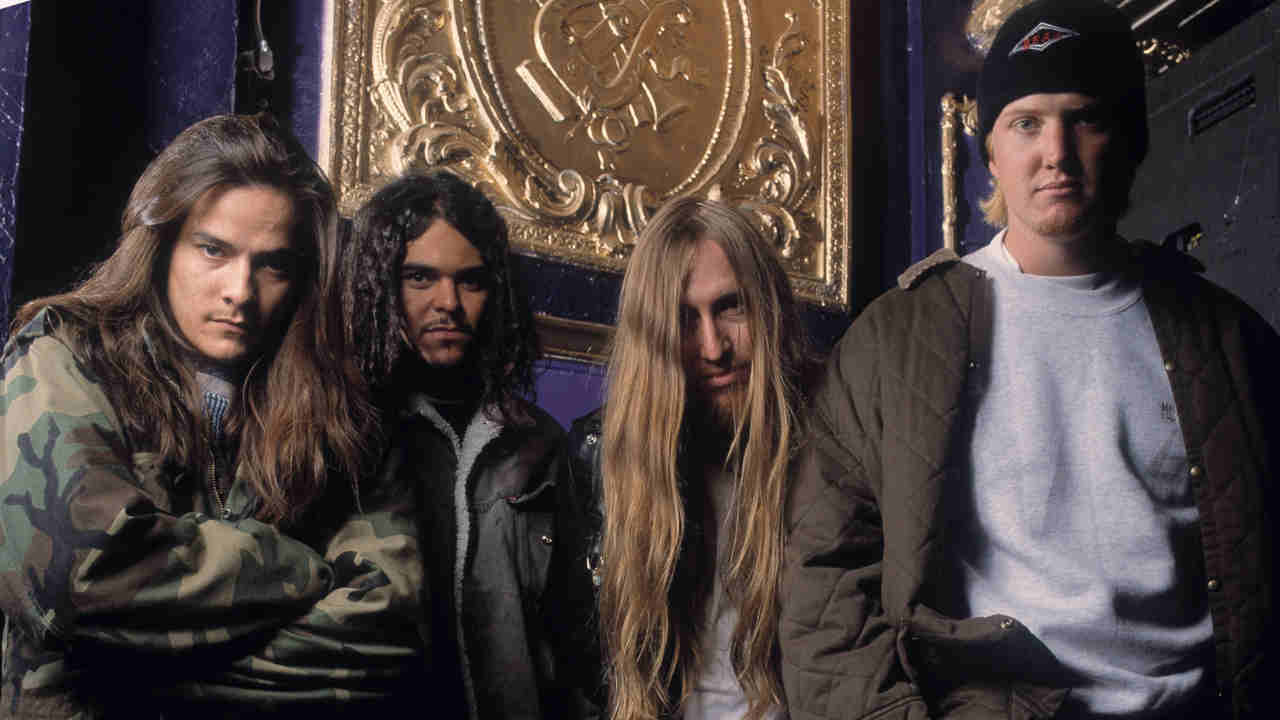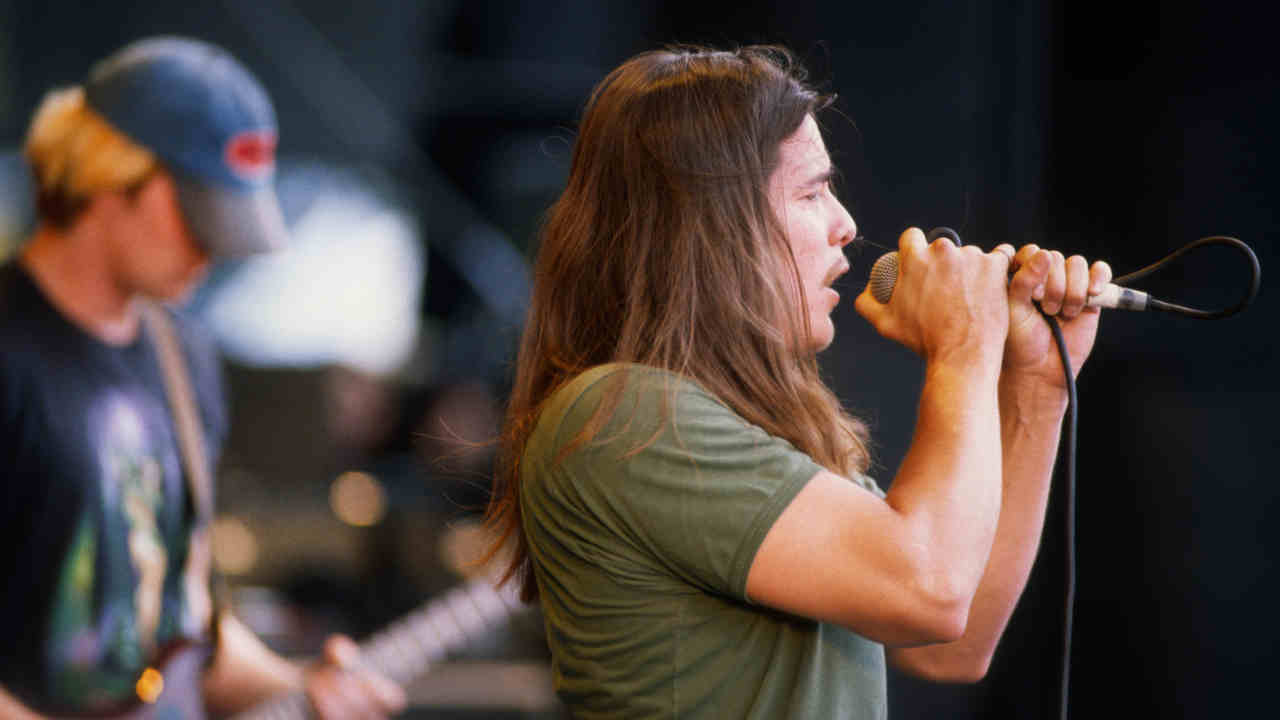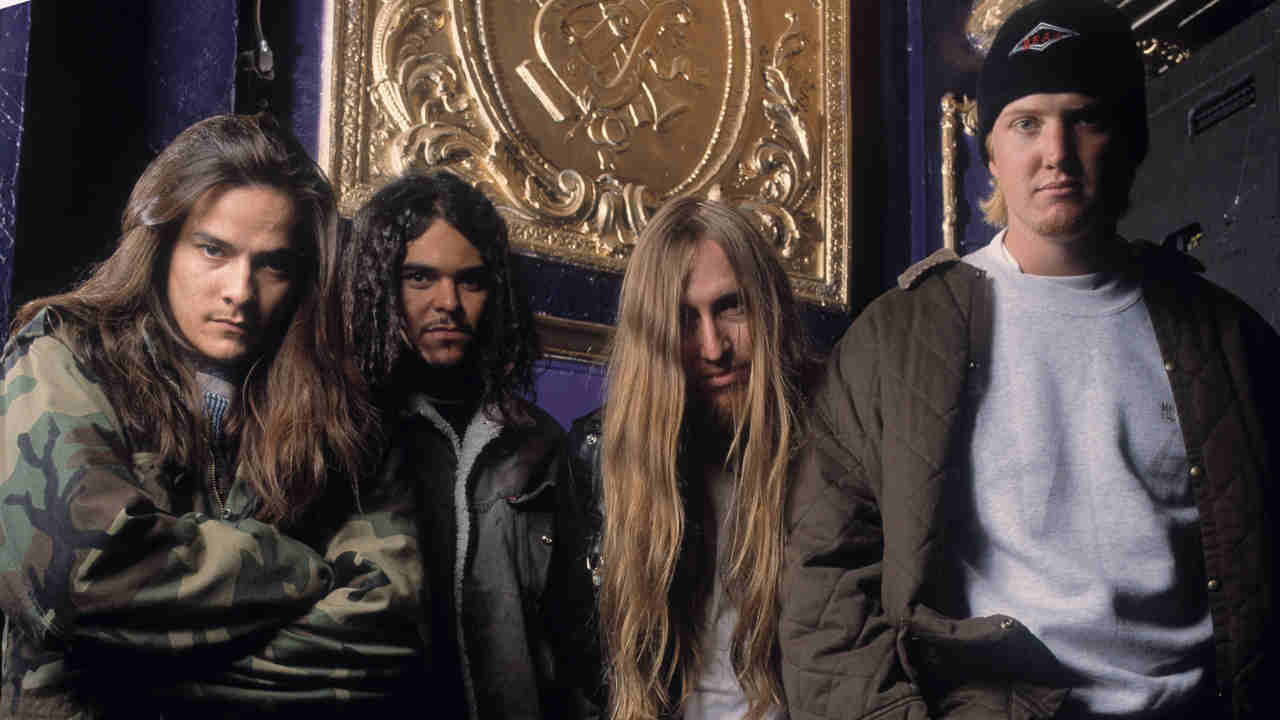“There was some smoking and drinking but it wasn’t a lot of drugs. We weren’t coked out of our minds or shooting heroin”: The epic story of Kyuss, the stoner metal visionaries who blazed brightly and burnt out

Kyuss can lay claim to being the fathers of modern stoner metal. The Palm Desert outfit released just four albums between 1991 and their split in 1995, but their legacy remains immense. In 2013, as former singer John Garcia launched his new band Vista Chino, he looked back on the band who blazed brightly and burnt out.
It’s 99 degrees in Palm Springs, California. Eight per cent humidity, zero breeze. The kind of heat that turns your brain to treacle if you stay out too long without ducking into a place with air conditioning, usually cranked up so high you have to put a jacket on. Tomorrow it will be 106, and while this is a place of staggering beauty, all wide open skies, mountains and deserts, the novelty wears thin. The biggest employers are golf resorts and antique shops, and gigs are few and far between. You’d probably want something to do. It was here, in 1987, that four high school kids – drummer Brant Bjork, guitarist Josh Homme, bassist Chris Cockrell and vocalist John Garcia – formed a band called Katzenjammer who went on to be legends. Well, not as Katzenjammer, obviously. You probably know them better as Kyuss.
“I’m not gonna get all Jim Morrison on you and talk about eating a bunch of peyote and going out into the desert and playing in front of canyons,” says John today. “It wasn’t any of that, it was four kids wanting to play in a rock band, and that’s it! Part of it was sheer boredom. It was a high school band and it grew into something more and more. I didn’t know and I didn’t appreciate it, and I had no idea that I was gonna be 43 years old talking about what I was doing in high school. It turned into something really, really cool.”
That’s putting it mildly. Having evolved into Sons Of Kyuss and put out a now much-sought-after EP, the band fired Chris and recruited wildman Nick Oliveri, who brought a new “intensity and realness”, serious about his craft “no matter how crazy he got”. Shortening their moniker to Kyuss, they released their debut album, Wretch, in 1991. Although it’s mauled by piss-poor production, you’ll still find the occasional glimmer of magic.
“On that record we were still finding ourselves,” says John of a band not yet out of their teens. “We were in there sweating our asses off, and at the time it was like, ‘Yeah man, that sounds good!’ If you listen to that now, I fucking cringe. I can’t listen to one goddamn song off that record because of how horrible it is.”

Thankfully, a wizard by the name of Chris Goss lived in the desert and he took the band under his wing, immediately capturing the live sound, that rumbling groove, that had been so elusive on early recordings. The result was Blues For The Red Sun in 1992, now quite rightly considered a classic, the very buds of what became known as stoner rock. There was a low-end heaviness to it like they were trying to fill the void of the desert, but with it a sense of wide open space and of shimmering, oppressive heat.
“I think Josh Homme has always had a little bit of mad scientist in him,” says John. “A lot of responsibility for that sound was on his and Brant Bjork’s shoulders. They had a very strong feel for Kyuss and what it should sound like, and wanted it to be different from anything else that you’ve heard. Their mad scientific doings gave it that sound. Whether the desert was a direct part of that… I don’t fucking know. I’m literally in the middle of the desert because I’ve since moved further away from civilisation to where I can’t let my kids out to play because there’s so many rattlesnakes out there.”
Was he aware that he was making a classic with Blues For The Red Sun?
“No, and I don’t think about it too much,” insists John. “It was just a part of who I was at the time, a very non-appreciative, pompous kid who didn’t give a fuck about any of that stuff. There’s a reason why I block some of that stuff out, and I think the best thing that ever happened to me was Kyuss breaking up because it really grounded me and made me a better person. I appreciate it more now and I’m kind of embarrassed by some of my antics back then.”
Ah yes. It was not unknown for a hungover John to sleep through interviews, and while Kyuss had a reputation for musical genius and were invited to open for Metallica and Faith No More, they were also getting an exaggerated reputation for drug-guzzling lunacy.
“There was some smoking and drinking but, to me, it wasn’t a lot of drugs,” argues Garcia. “A lot of drugs is a kilo of cocaine and a half kilo of crystal meth and a bunch of weed and mushrooms and a keg. The amount of drugs that we were taking, honestly wasn’t a lot. We weren’t coked out of our minds or shooting heroin; it wasn’t like that. The whole drug reference and the stoner rock thing, I learned to embrace it, but I can’t remember the last time I smoked weed. I’m not chomping on mushroom margaritas and going out into the desert shooting coyotes. There’s a misconception that it was a drug-infused writing force.”
Kyuss – Demon Cleaner (Official Video) – YouTube 
Inevitably, Nick Oliveri was fired before the band even made it to the UK, his “intensity and realness” becoming “a little too much”. Instead they recruited Scott Reeder, already known for playing with desert band Across The River, and later The Obsessed. He played an upside-down old Rickenbacker, left-handed and bare- foot, and remains one of the best bassists on Earth. Not surprisingly the next album, 1994’s Welcome To Sky Valley, was another classic: now so venerated that the Sky Valley sign depicted on the cover is often stolen.
“Nobody even cared when we did that,” says John. “It wasn’t until we broke up that the sign started disappearing and it’s pretty trippy to me to know that people dig that. I’m in awe, but I don’t think about it too much because it’s who I am and what the past is. That was Brant’s last participation on that record and I know it’s Josh’s favourite because he was really coming into his own, and he grasped onto the recording process and the direction he saw the band going. We can’t leave Brant out, though, because he was half of the songwriting power on that record and that was the last time I got to see those two guys work together. When they worked together it was an amazing thing.”
“Brant quit right after the record was done,” continues John. “I don’t think it was even out when he quit and he left for creative differences; he didn’t like the way the band was going. There was nothing bad. That was my goodbye, but I don’t know how that conversation went with Josh.”
The obvious choice after that was Alfredo Hernandez, who also used to play in Across The River with Scott Reeder. They immediately started practising and writing. “He brought a totally different style,” says John, “and when Scott came up with the riff for One Inch Man and I came up with the lyrics, it was obvious that the band was going in a different direction, but staying along the lines of the Kyuss vibe and attitude.”
There was to be just one more Kyuss album, 1995’s prophetically titled …And The Circus Leaves Town. It’s John’s favourite Kyuss record, although he had no idea it would be their last.
“It was just a title,” he shrugs, “and it was because when Kyuss came to town… well, I’m not making Kyuss out to be angels. It was an intense time with a lot of intense shows. When the walls start to sweat, those are the kinds of shows you remember… Or you don’t remember. It was a lot of good times, but Circus was very appropriately titled. I don’t look at it album by album, I look at it as a whole, from when Chris Cockrell invited me up to Brant Bjork’s bedroom, to the time I sat down with Josh Homme at the Red Barn and we decided to break up. I look at is as a ride, one big rollercoaster with peaks and valleys.”
And for a while that ride was over. Kyuss broke up in 1995, drifting off to solo projects, joining or forming other bands, like Unida, Fu Manchu, Slo Burn, Eagles Of Death Metal and a little band called Queens Of The Stone Age. The break-up is not something Garcia wants to dig through right now.

Rumours persisted of a reunion, but despite John Garcia singing three Kyuss tunes with Queens Of The Stone Age in Los Angeles in 2005, only an idiot would have bet on it. And still only an idiot might, but in 2010 John was singing Kyuss tunes at Hellfest in France and Nick and Brant joined him onstage. With Bruno Fevery on guitar, they quickly formed Kyuss Lives! and you can bicker all you like about whether it was the real deal or not. Certainly, it was three out of four members of a band that had never had the same lineup for long. It all got a bit messy, though, and there was a legal battle, Josh and Scott (who played occasionally with Kyuss Lives!) disputing their right to the name. Again, it’s something John is eager to move on from. The band’s now called Vista Chino and their new album is entitled Peace. Nick played on the album, but Mike Dean from Corrosion Of Conformity is the touring bassist, “depending on availability”.
“I don’t know what Nick’s up to,” admits John. “I have nothing but love for Nick and he’s a good guy with a giant heart. Nick Oliveri’s the real deal.”
Essentially it’s a new band, and yet the debut album may just as well be Kyuss, with shades of everything from the red sun to the circus leaving town. Let’s not pretend it sounds any other way. “It was very organic to do it up in Joshua Tree,” Garcia smiles. “I’m singing out of Jim Morrison’s old classic microphone, for fuck’s sake! There’s a lot of peaks and valleys and all the songs are different. I was curious what the record would sound like because I didn’t know, myself. It was just very pure and organic. When you’re singing out of Jim Morrison’s microphone, looking at the Joshua Tree national monument across the street, it’s a pretty rad feeling.”
And were you looking out of the window when you named the band? Vista Chino’s a street name! The sign will get nicked! “Brant and I are from the desert,” laughs Garcia. “There was literally one name brought up and that was it. When you come to the desert, any way you get into Palm Springs coming from Los Angeles you’re gonna see Vista Chino!”
And perhaps the title, Peace, is an olive branch to former bandmembers? “That title resonated with me,” says John. “It’s all we want. Fuck with us and you do so at your own peril, but we don’t want that. We’re lovers, not fighters and all we want is to rock.”
Originally published in Metal Hammer issue 248

